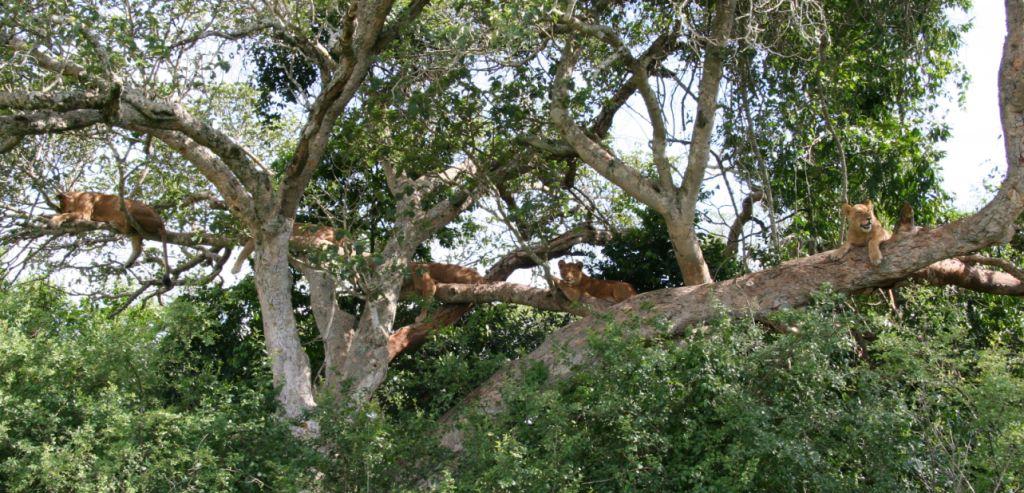The Ishasha sector of Queen Elizabeth National Park is a remote savannah area in the southern part of the park. The area enjoys fewer visitors than the north – what many refer to as the Mweya section or the Kasenyi plains, but those who venture into the Ishasha sector may be rewarded with sightings of Ishasha’s most famous residents – the tree-climbing lions. You will see these lions lounging in the branches while keeping a close eye on herds of Uganda kobs.

This Ishasha sector is also home to other wildlife species including many herds of buffaloes and giant African elephants as well as the rare shoebill stork. Ishasha sector is also a convenient region to pass through on your way to or from Bwindi Impenetrable National Park for a gorilla trekking safari in Bwindi. Though bypassed by most of the tour groups, Ishasha ranks with the most alluring game viewing areas in the country, as much as for its untrammeled mood as its varied wildlife.
Wildlife at Ishasha Sector Queen Elizabeth National Park
The most celebrated residents of the Ishasha sector are its tree-climbing lions, one of the few populations in Africa that habitually climb trees. The explanation for this unusual behavior is open to conjecture. In East Africa, the tree-climbing lions can again be traced and found in Tanzania’s Lake Manyara National Park.
In the Ishasha sector is the Ishasha River, which can be explored on foot from your camp along the banks. This supports a healthy hippo population, most observed from Ishasha Wildness Camp. The fringing riparian forest harbors a good number of bushbucks and black and white colobus monkeys. There are also an interesting variety of bird species, including the black-bee-eater, broad-billed-roller, and the localized Cassin’s grey flycatcher among others.
Away from the river, light acacia woodland and savannah supports large herds of Uganda kobs, topi, buffaloes, and white elephants, which are seasonally common.
Ishasha Sector Game Circuits
Two main game circuits run out of the Ishasha sector, the northern and southern loops both of which are roughly 20 km in length. The northern circuit that passes through the kob breeding grounds on the shores of Lake Edward, is rated as the most productive for spotting lions.
Like in Kasenyi plains, the lions stick to the kobs on which they prey, so their presence is always revealed by alarm calls from these vulnerable antelopes. A 10 km road extending north from this road loop leads to the marshy shores of Lake Edward – a good site for waterbirds, including the herons, storks and plovers, and possibly shoebill.
